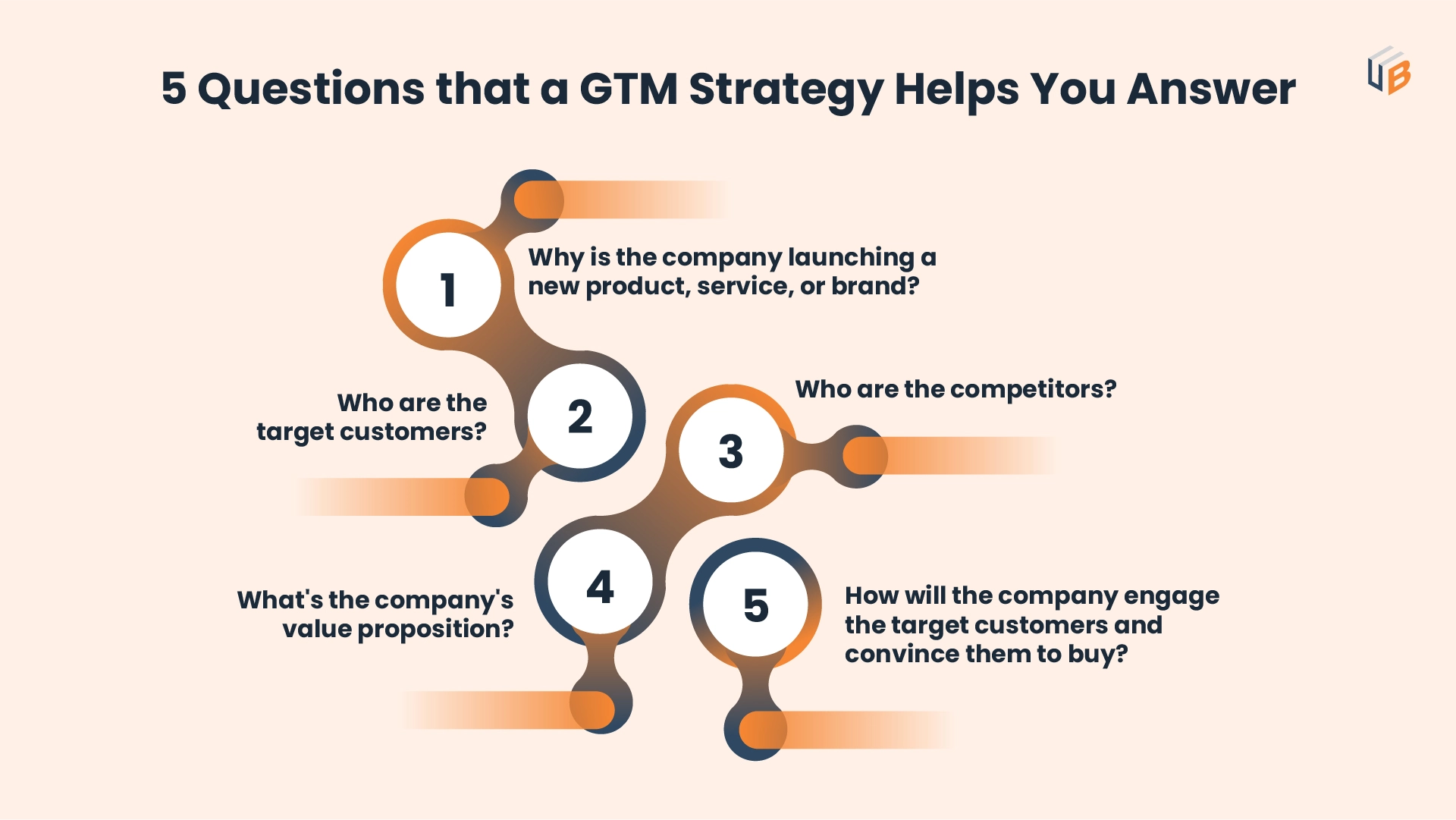
As 2023 draws to a close, you may already be thinking about your company’s marketing goals for 2024. This could be to expand your customer base or enter a new market.
For any company, these, and other marketing activities like new product/service launches, or brand relaunch can be exciting. But they don’t always succeed. In fact, numerous innovative products have failed soon after getting into the market.
But this shouldn’t be your story.
If you plan to launch a new service or product, introduce current ones to a new market, or relaunch your brand in 2024, developing a strong go-to-market strategy would be a great place to start.
Go-to-market strategies allow companies to gather all the information they need to position their brands or product/services in the market, handle the competition, craft scalable sales models, and employ the right tactics to realize their marketing goals.
So, What is a Go-To-Market Strategy?
A go-to-market strategy is an actionable, well-thought out plan on how your company will get a competitive edge in the market and reach its target audience. Developing this strategy can help your team to position its product or brand in the market and coordinate marketing messages.
Having a go-to-market strategy also minimizes risks associated with introducing new products or services to the market. It helps you answer questions like:

- Why is the company launching a new product, service or brand?
- Who are the target customers?
- Who are the competitors?
- What’s the company’s value proposition?
- How will the company engage the target customers and convince them to buy?
A solid go-to-market marketing plan will typically have the following:
- Profiles of the target audience
- A marketing plan
- A sales strategy
- A product or service distribution plan
- Product/service pricing
With a solid go-to-market strategy framework, you’ll know exactly what your company needs to do to deliver the new service or product to the end user, while considering factors like distribution and pricing.
Building a Strong Go-To-Market Strategy in 2024
In 2024, building a strong go-to-market strategy and brand identity will involve implementing the following strategies:
1. Competitor Analysis
Competitor analysis remains critical when it comes to building a solid go-to-market brand identity.
Competitor analysis entails researching the competition in your target market. Before you enter a new market or launch a new product/service, you need to know how your product fits in the target market. A competitor analysis can give you insights on:
- Which companies are selling similar products in the market
- The products or services they sell
- The sales and marketing strategies the companies deploy
The idea is to compare important market metrics that can help you differentiate your product or service offerings from those that competitors offer. In-depth competitor analysis can empower your company to develop a solid sales and marketing strategy, enabling it to stand out. In 2024, competitor analysis will largely be driven by technologies such as artificial intelligence and machine learning.
Companies seeking to launch products in markets where historical data isn’t available will leverage AI’s proficiency to model scenarios and predict marketing outcomes. This will enable them to:
- Determine the value proposition of your product or service
- Identify opportunities in your target market
- Know what resonates with your ideal customers
- Craft and implement effective business strategies
- Ward off the competition
- Capture a significant share of the market
2. Interactive Buyer Personas
The first thing you need to consider when preparing to launch a new product or enter a new market in 2024 is the customer.
Building a solid go-to-market marketing strategy starts with understanding who your target consumer will be. Creating buyer personas or ideal customer profiles allows you to define which customer segments will find your product/service useful and increase profits for your company. For B2B companies, purchases can involve up to multiple decision-makers, each playing a distinct role.
When developing buyer personas, your team must identify decision-makers for each account and their role in the buying process. For each decision-maker, the team should answer these critical questions:
- What do they do in the company?
- What motivates them?
- What are their struggles and pain points?
- What are their goals?
Answering these questions enables your company to understand its target customers better and determine how best to engage them.
Done using the traditional approach, this process can be tedious, time-consuming, and prone to errors. Tech-powered interactive buyer personas will change the way companies develop buyer personas to power their go-to-market strategy in 2024. By leveraging the power of AI, marketing teams will interact with their target audience to understand their needs and preferences in real-time.
3. AI-Driven Messaging
Targeting ideal customers with the right message will be critical to the success of any product or service launch in 2024, and artificial intelligence (AI) will be at the heart of it.
In go to market branding, effective messaging involves informing ideal customers of the value products or services offered in a way that reverberates with their pain points. To do this, companies must speak their language.
With ideal customer profiles in place, the focus shifts to crafting a marketing message matrix that analyzes each ideal customer profile, their struggles, and the solution that your service or product offers. A good messaging matrix also carries marketing messages that links your ideal customer problems to the solutions you’re offering.
A great way to meaningfully capture your ideal customer’s pain point and the value your solution offers in a marketing message is to agitate the problem – which is where AI technologies will come in handy.
Companies will be leveraging AI to generate marketing messages that connect with different customer segments and boost conversions. B2B companies will also leverage AI tools in executing ads and social media strategies for specific segments.
4. Sales Strategies Mix
Another strategy you can use to build a strong go-to-market brand identity in 2024 is implementing the right mix of sales strategies. You’ll need to implement a mix of sales strategies to reach your ideal customers. No single strategy will work for each market or product/service.
When identifying sales strategies, think about their complexity, cost, and scalability. For instance, your team can utilize prospect data to implement account-based marketing strategies, targeting key decisions made in key accounts.
Where there’s a need to nurture prospects to convert, the team may utilize inside sales tactics. This strategy works well for medium-priced, less complex products. You’ll have to invest in a sales team, and scale it as the volume of sales increases.
5. Inbound and Outbound Demand Generation
In 2024, demand generation through inbound and outbound campaigns is another strategy that companies will use to build go-to-market brand identity.
This strategy allows B2B marketers to create awareness of their products or services in new markets, pushing prospects to their sales pipelines. Inbound traffic enables prospects to express interest organically and will be generated through paid ads, content and social media.
Outbound strategies will involve lead generation through sales outreaches. Sales reps will be phoning leads, sending warm or cold emails out to leads, or conducting conferences to generate demand for new products or current products in new markets.
6. Content-Driven Lead Generation
Creating a strong go-to-market brand identity requires a solid content marketing strategy. Through content marketing, B2B companies will continue to attract, nurture and convert high-quality leads in new markets into loyal customers.
Essentially, the content marketing strategy will involve:
- Researching relevant keywords
- Creating SEO-optimized content
- Aligning content to the buyer’s journey of the target audience
- Distributing content
- Measuring results
7. Modeling Market Results
Solid go-to-market strategies are clear in their marketing models with regard to capacity and financial plans. In most cases, marketers opt for a 50/50 balance between outbound and inbound efforts.
For instance, let’s say you have three sales reps supporting your sales efforts.
You can use their daily outputs to predetermine the results the model will produce after applying their average opportunity to close rate, like 20%. With this information, you can build an entire sales funnel and map realistic sales targets that your team can achieve each month.
Applying the same approach to inbound lead generation campaigns like content marketing will make it easier to predict sales outcomes.
Final Thoughts
For companies that plan to relaunch their brand, launch a new product, or introduce current products to new markets in 2024, a go-to-market strategy will determine how successful that plan will be. Preparing a good go-to-market marketing plan will enable your team to position your brand, product or service in the market, engage target customers and handle competitors better. Implement the seven strategies highlighted above to launch your product or service successfully.
Our blog
Latest blog posts
Tool and strategies modern teams need to help their companies grow.

Running a business comes with its own set of challenges, especially when it comes to ...

AI is surely a futuristic concept but it evolves today, particularly in sales and mar...

A successful webinar requires more than just a great speaker and a compelling topic. ...






